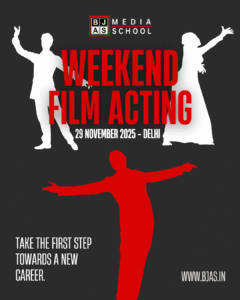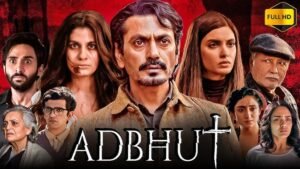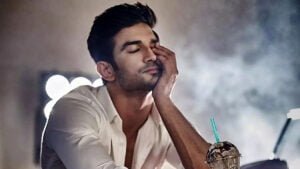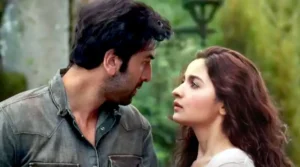Bollywood, India’s prolific film industry, has always been a vibrant tapestry of colors, emotions, and drama. Traditionally known for its melodramatic expressions and elaborate song-and-dance sequences, Bollywood has seen a significant shift in its acting style over the past few years. This evolution reflects broader changes in society, culture, and audience expectations. Let’s dive into how Bollywood’s acting style has transformed and the key players driving this change.
The Shift from Melodrama to Realism
Old School Bollywood
In the golden era of Bollywood, acting was synonymous with exaggerated expressions and theatrical dialogues. Actors like Raj Kapoor and Nargis, while legendary, epitomized a style that was larger-than-life. Their performances were designed to appeal to the masses, evoking strong, often simplistic emotions.
The New Wave of Realism
However, recent years have witnessed a seismic shift towards more nuanced, realistic portrayals. This change is evident in the performances of actors such as Nawazuddin Siddiqui, Irrfan Khan, and Ayushmann Khurrana. These actors have brought a subtlety to their roles, focusing on internal conflicts and understated emotions.
Nawazuddin Siddiqui in “Gangs of Wasseypur”
Nawazuddin Siddiqui’s performance in “Gangs of Wasseypur” is a prime example. His portrayal of Faizal Khan is marked by a raw, gritty realism that contrasts sharply with the melodramatic heroes of yesteryears. Siddiqui’s ability to convey complex emotions with minimal dialogue has set a new benchmark for acting in Bollywood.
Irrfan Khan in “Piku”
Irrfan Khan’s role in “Piku” is another testament to this shift. As Rana Chaudhary, a simple yet deeply layered character, Khan’s performance is both poignant and authentic. His naturalistic acting style made audiences relate to his character’s everyday struggles and triumphs.
Ayushmann Khurrana’s Bold Choices
Ayushmann Khurrana has also emerged as a flagbearer of this new wave. Known for choosing unconventional roles, Khurrana’s performances in films like “Article 15” and “Shubh Mangal Saavdhan” showcase his ability to blend realism with socially relevant themes. His approach has resonated with a younger, more discerning audience.
Embracing Complex Characters
Strong Female Leads
Bollywood has also seen a surge in strong, multifaceted female characters. Actresses like Vidya Balan, Alia Bhatt, and Kangana Ranaut are leading this change.
Vidya Balan in “Kahaani”
Vidya Balan’s portrayal of Vidya Bagchi in “Kahaani” is a standout example. Balan’s character is a pregnant woman searching for her missing husband in Kolkata. Her performance is a masterclass in conveying vulnerability, determination, and strength, shattering the traditional damsel-in-distress stereotype.
Alia Bhatt in “Raazi”
Alia Bhatt’s role in “Raazi” further underscores this trend. Playing Sehmat, an Indian spy married into a Pakistani military family, Bhatt delivers a performance that is both intense and layered. Her ability to depict the emotional turmoil of her character without resorting to over-the-top theatrics marks a significant departure from the past.
The Influence of Web Series
The rise of digital platforms has also played a crucial role in transforming Bollywood’s acting style. Web series such as “Sacred Games” and “Delhi Crime” have set new standards for performance and storytelling.
“Sacred Games” – A Game Changer
“Sacred Games,” featuring Saif Ali Khan and Nawazuddin Siddiqui, is a landmark series that brought cinematic quality to the small screen. The complex characters and intricate plotlines demanded a more restrained and realistic acting style. Saif Ali Khan’s portrayal of Sartaj Singh, a troubled cop, is a departure from his previous, more glamorous roles. His nuanced performance contributed significantly to the series’ success.
“Delhi Crime” – Gritty Realism
“Delhi Crime,” starring Shefali Shah, is another example of this shift. Shah’s portrayal of DCP Vartika Chaturvedi, based on a real-life police officer, is grounded and authentic. The series’ focus on real events required a performance that was both respectful and powerful, highlighting the need for realism in modern storytelling.
Conclusion: A Welcome Evolution
The evolution of acting styles in Bollywood reflects changing audience preferences and a broader shift towards more sophisticated, realistic storytelling. This transformation has been driven by a new generation of actors who prioritize authenticity and depth over theatricality.
From Nawazuddin Siddiqui’s raw performances to Alia Bhatt’s layered characters and the influence of high-quality web series, Bollywood is embracing a more nuanced approach to acting. This change not only enriches the cinematic experience but also sets a new standard for future generations of actors.
As Bollywood continues to evolve, one thing is clear: the days of melodrama are giving way to a new era of realism, and we, as the audience, are all the better for it.







